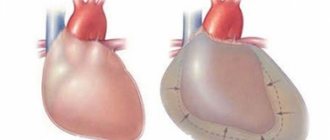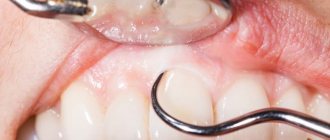General practitioner
Shekinah
Natalya Nikolaevna
15 years of experience
General practitioner
Make an appointment
While still at school, children learn about white blood cells and the importance of the many functions they perform in the body. However, an excess of even such useful enzymes in the blood can create health problems. What kind of disease is this in adults - leukocytosis?
Leukocytosis is a process of changes in the composition of the blood, which results in an increase in the number of leukocytes. For adults, the norm for leukocytes is considered to be 9000 in 1 μl of peripheral blood. Exceeding these values may indicate a problem. The changes that occur in the composition of the blood are the body’s protection against certain influencing factors. For specialists, an increase in the number of leukocytes becomes one of the important signs when diagnosing a number of pathologies.
What are leukocytes, their role, types
Leukocytes or, as they are also called, “white blood” perform the protective function of the body, destroying waste, toxins, viruses, bacteria and foreign bodies. They are a kind of line of defense that not only prevents the infection from spreading, but also destroys it.
White blood cells are produced in the bone marrow. Passing through a series of intermediate stages of development, mature cells that are capable of fighting infection enter the blood. However, their lifespan is quite short (varies from 4 to 20 days), so updating occurs regularly. A sharp increase in the production of leukocytes occurs in response to any tissue damage or the occurrence of harmful agents in order to provide a timely inflammatory response, the purpose of which is to isolate the damage, destroy the pathogen and restore tissue.
Cells of the leukocyte series are divided into 5 types, each of which has individual characteristics and functions:
- Basophils. This is the smallest group of leukocytes, which not only helps other cells detect foreign agents, but also prevents their spread in the body, neutralizes toxins and poisons and suppresses allergens;
- Eosinophils. They are the main effector cells in infectious, parasitic, allergic and oncological diseases. They are the ones who release mediators that are toxic to tissues and support inflammation;
- Monocytes. This is the largest type of leukocyte, the main function of which is phagocytosis, in other words, absorption, including quite large foreign particles;
- Lymphocytes. They, perhaps, perform one of the most important protective functions - they are responsible for immunity. They are the ones who produce antibodies that prevent recurrence of the disease. They make up from 25 to 40% of the total mass of leukocytes in the blood;
- Neutrophils. These are unique universal fighters who are able to leave the bloodstream and rush towards infection, actively promoting inflammation. This is the largest group of leukocytes that have the ability to absorb and destroy foreign particles.
Normal for pregnant women
Pregnant women experience changes according to many studies. During the period of bearing a child, the concentration of leukocyte cells up to 12-15*109/l is considered the norm. By trimester it will look like this:
| Trimester | White blood cell count (*109) |
| first | 4 — 9 |
| second | 4 — 10 |
| third | 14 — 12 |
High values are due to increased protective functions of the body, thickening of the blood during pregnancy, and a decrease in the level of lymphocytes. Also during pregnancy you need to know your TSH level.
Also, an increased level of white blood cells is necessary to stimulate uterine contractions.
It is worth noting that each private laboratory has its own standards, slightly different from those prescribed in the document. This is due to the equipment used. Therefore, when donating blood privately, you should pay attention to the standards indicated on the form.
Indications for prescribing a leukocyte test
Since leukocyte analysis is carried out as part of a general blood test, every person who monitors their health undergoes it on a regular basis. These people also include pregnant women: in the absence of any signs of disease, they undergo this study regularly so that diseases and abnormalities in the development of pregnancy can be identified in advance.
In addition to medical examination, the analysis is taken during hospitalization and before surgery in order to conduct a basic examination and obtain information about the general condition of the body. As part of the diagnosis, a general analysis is prescribed if inflammatory processes in the body, parasitic infestations, infectious diseases and allergic reactions are suspected. Certain changes in the leukocyte composition may indicate oncology and serve as a reason for a more in-depth study.
This analysis is also used to assess the quality of treatment; the composition of the blood determines the effectiveness of the current drug therapy: perhaps the chosen plan does not help and needs to be adjusted.
Treatment of leukocytosis
Leukocytosis is usually detected only by blood tests. A person does not feel any obvious symptoms indicating a change in the blood. Thus, he may complain of a number of ailments, which are often not associated in any way with a deviation from standard values in the concentration of white blood cells:
- general malaise and fatigue;
- loss of appetite, dizziness (other possible causes of dizziness in women are described here), excessive sweating;
- joint and muscle pain;
- sleep disorder (treated by a somnologist), weakened vision (therapy carried out by an ophthalmologist).
In order to reduce the value of an indicator, the increase of which is associated with physiological reasons, it is recommended:
- avoid hypothermia and overheating;
- Healthy food;
- observe a rest regime;
- be less nervous.
Those. therapy is associated with the elimination of factors causing an increase in the indicator.
If a diagnosis of “leukocytosis” is established, self-medication should not be done under any circumstances. The doctor himself, based on repeated tests and additional examinations, will determine the etymology of the growth of leukocyte cells and prescribe the appropriate treatment.
This article has been verified by a current qualified physician, Victoria Druzhikina, and can be considered a reliable source of information for site users.
Bibliography
1.https://medline.ru/public/art/tom18/art6.html 2. Uncle G.I. et al. Universal reference book for a practicing physician (Section “General blood test”) // Voronezh: Scientific book. - 2021. - 512 p. 3. Kishkun A. A. Clinical laboratory diagnostics. Textbook (Chapter 2. Hematological studies) // M.: GEOTAR-Media. — 2015. — 976 p.
4. Standards for indicators of the composition of blood cells and other indicators are reflected in the ORDER of the Ministry of Health of the Russian Federation dated 09/14/2001 364 (as amended on 06/06/2008), Appendix 3 “NORMS FOR THE COMPOSITION AND BIOCHEMICAL INDICATORS OF PERIPHERAL BLOOD”
Rate how useful it was article
4.4 30 people voted, average rating 4.4
Did you like the article? Save it to your wall so you don’t lose it!
Preparing for analysis
The number of leukocytes in the blood depends on many factors, and the most important of them is age. Children have many more immune cells than adults. The time of day, diet and medications taken also affect. The situation is different in the case of gender - in men and women the leukocyte composition of the blood is approximately the same. The distribution norms for groups of leukocytes in a healthy person look like this:
- Basophils, as the smallest group, make up only 0.5 - 1% of the total number of leukocytes in one microliter of blood;
- Eosinophils occupy a slightly larger portion - 2.5%;
- Monocytes make up 5%;
- Lymphocytes belong to one of the most numerous groups and make up approximately 35% of the total number of leukocytes;
- Neutrophils are the most numerous group, accounting for 55%.
Leukocyte analysis is included in the general blood test, where leukocyte indicators reflect their total number. As already mentioned, age is very important when conducting analysis. The following standards exist for children:
- Newborn (1 - 3 days) - from 7 to 32 × 109 units per liter (U/l)
- Age up to 12 months - from 6 to 17.5 × 109 U/l
- Age from 1 to 2 years - from 6 to 17 × 109 U/l
- Age from 6 to 16 years - from 4.5 to 13.5 × 109 U/l
In adult men, the norm ranges from 4.2 to 9 × 109 U/l, and in adult women - from 3.98 to 10.4 × 109 U/l. In the elderly, the number of leukocytes decreases sharply, and for men the norm is from 3.9 to 8.5 × 109 U/l, and for women - from 3.7 to 9 × 109 U/l.
Normal for men
The leukocyte count in men is subject to less fluctuations than in women. The norm for men by age is presented in the table:
| Man's age | White blood cell count (*109) |
| 12-18 years old | 3,5 — 8 |
| 18-25 years old | 4 — 9 |
| 25-40 years | 4 — 8 |
| Over 40 years old | 3 — 9 |
Complete blood count for leukocytes
Clinical analysis of leukocytes, which is also called general, gives a detailed description of the qualitative and quantitative composition of blood, namely: characteristics of red blood cells and their indicators, characteristics of the number of leukocytes and the percentage of their groups and characteristics of platelets.
During a clinical blood test, special attention is paid to leukocytes, since the body’s ability to resist infections and various diseases depends on them. During the study, a leukocyte formula is compiled, that is, the number of leukocytes of all groups is given as a percentage: basophils, eosinophils, monocytes, lymphocytes and neutrophils.
It is noteworthy that an increased number of leukocytes indicates the presence of a disease, but it is not possible to make a specific diagnosis based only on this indicator. The data is analyzed only in conjunction with the results of the study of red blood cells and platelets (special attention is paid to red blood cells), only in this case will it be possible to either make an accurate diagnosis or plan further examination and treatment. Moreover, often the most accurate results can be obtained only by analyzing the dynamics of blood parameters, that is, by taking a general analysis several times.
Normal in children
Children tend to have higher white blood cell counts. The norm for different ages is presented in the table:
| Age | White blood cell count (*109) |
| newborn | 10 — 30 |
| from the fifth day of life | 9 — 15 |
| from the tenth day of life to one month | 8,5 — 14 |
| from month to year | 8 — 12 |
| from one to five years | 7 — 11 |
| from 5 to 15 years | 6 — 10 |
| over 15 years old | 5 — 9 |
The table shows that the norm of leukocyte content in newborn children is very different, for example, from the norm in children 5 years old.
Interpretation of test results (increased leukocytes)
When the amount of white blood cells in the blood is higher than normal, this condition is called leukocytosis. Before making a diagnosis, it is important to initially exclude physiological leukocytosis, which, as a result of a slight increase in indicators, indicates that in the near future the person has experienced physical activity, stress, or simply ate (while eating, the body prepares in advance to protect itself from possible poisoning, increasing the number of leukocytes in the blood ). In this case, white blood cells increase evenly and for a short period of time.
The situation is different if the number from a particular group is increased. For example, if the count is in the thousands of neutrophils, this means that there is an inflammatory process in the body, or it indicates the presence of infection or tissue damage. When the result is already millions higher than normal, this can signal such dangerous diseases as oncology, tuberculosis, severe intoxication or serious injury.
By the number of eosinophils, one can determine the presence of an allergic reaction, which is manifested by a significant increase in the number of these cells in relation to other groups of leukocytes. The same reaction manifests itself into intolerance to certain medications.
An increase in basophils is often observed in pregnant women; this is the norm, but in the absence of pregnancy, this indicator signals possible problems with the intestines, kidneys, and spleen.
Lymphocytes are elevated if the body is suffering from a serious viral infection (for example, tuberculosis), and monocytic leukocytosis indicates that either a person who has had an infectious disease is now in the process of recovery, or it signals the presence of certain types of tumors.
Leukocytes in the blood are low
If leukocytes are elevated, it means there is an inflammatory process in the body, or a fight against infection, but the body fights on its own and often copes with the task, but what do low leukocytes signal? About a decrease in a person’s immunity, about a deterioration in the body’s ability to resist various diseases.
A reduced level of white blood cells indicates problems in the hematopoietic system, namely in the bone marrow, which produces blood cells. Chemotherapy for cancer, as well as taking interferon-based drugs, can cause a decrease in the number of indicators. but lower results do not always indicate the presence of a serious disease. Sometimes the reason can be simple - poor nutrition and a significant lack of certain vitamins: B vitamins, copper, iron and folic acid.
Severely low white blood cells can be a sign of a disease such as AIDS. This deviation should serve as a reason for conducting a more in-depth analysis of the health status.
Place of formation of leukocytes
The place of formation is the main hematopoietic stem cell of the bone marrow (pluripotent), during the disease it is capable of providing hematopoiesis independently. Precursor cells (the same as stem cells) are the next stage of formation. Unipotent cells (hematopoietic germs) become morphologically recognizable and mature into mature leukocytes, which are visible in the peripheral blood.
Their life expectancy, depending on the species, ranges from several hours to several months, is regulated by the leukocyte formula (by taking a general blood test from a finger prick) in clinical laboratories of medical institutions and is deciphered by a doctor. The destruction of white blood cells is called leukolysis.
Video - Leukocytes
Examination at MedArt
If you want to get a 100% reliable result of a general (clinical) blood test, you will always be welcome at the MedArt diagnostic center. Our specialists are highly qualified and fully competent in the work entrusted to them. High-precision modern medical equipment, high-quality reagents, necessary consumables - we guarantee each of our clients service at the highest level.
With us, you can take a general blood test in a calm and comfortable environment, without distorting the results of your tests due to stress and emotional tension obtained in a long line. You can get accurate and reliable results in just one business day.








